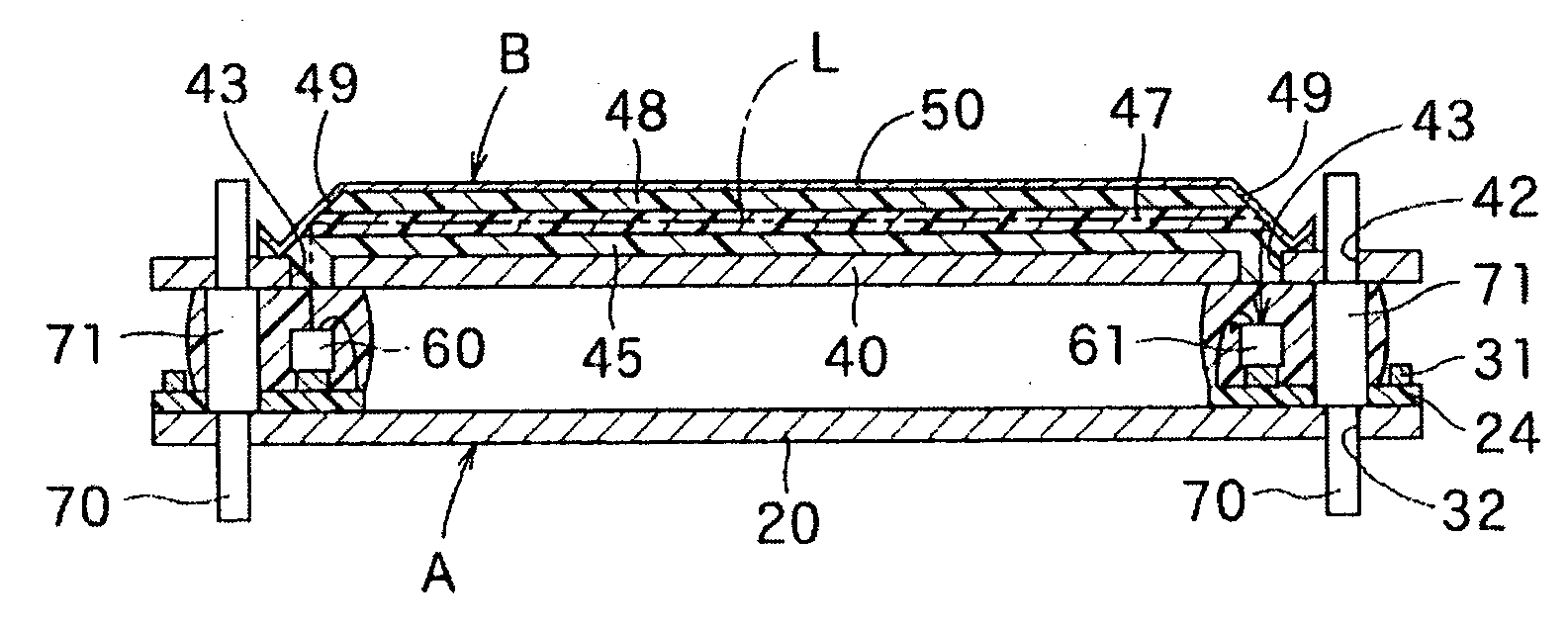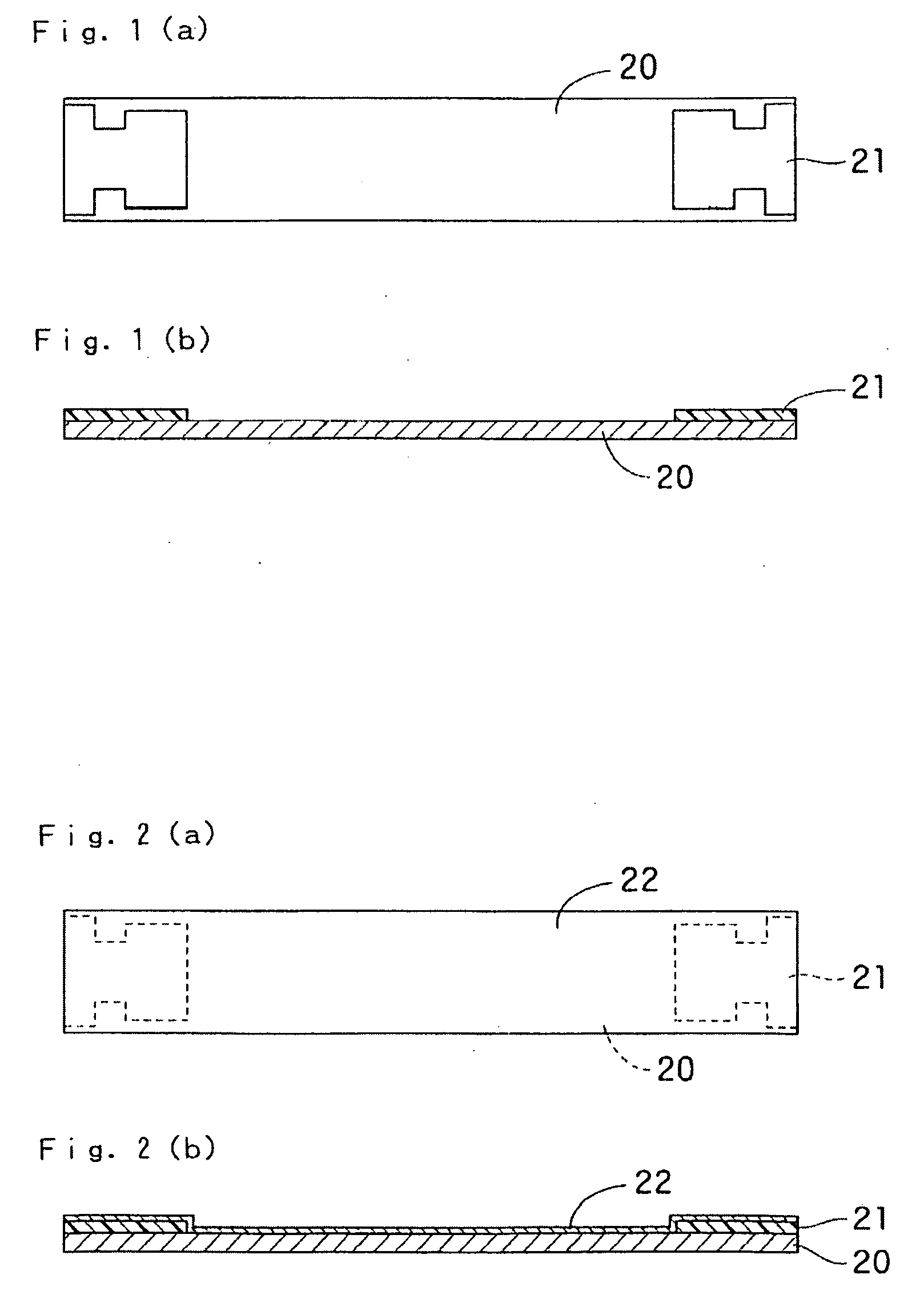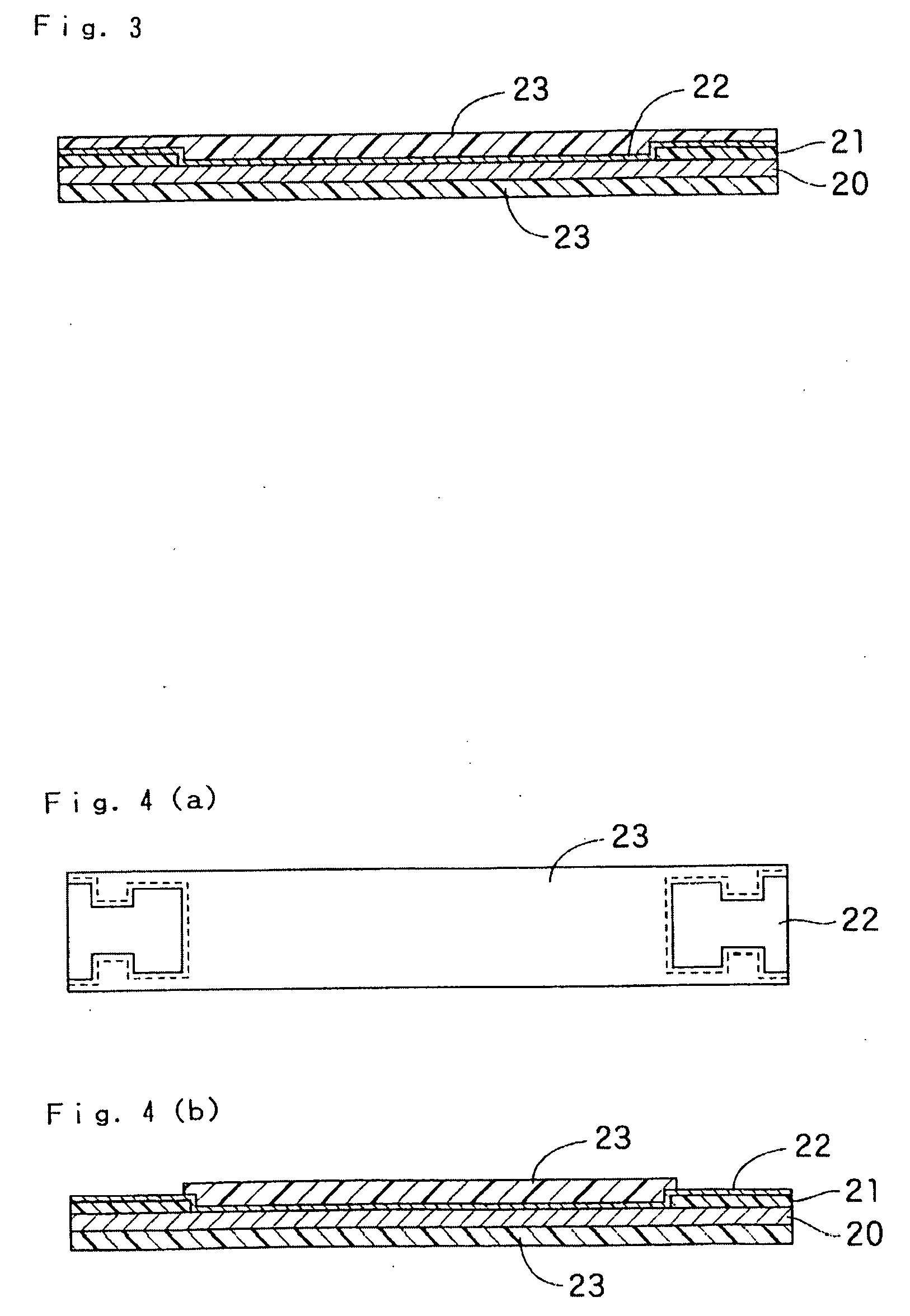Manufacturing method of opto-electric hybrid board and opto-electric hybrid board obtained thereby
a technology of opto-electric hybrid boards and manufacturing methods, which is applied in the field of manufacturing methods of opto-electric hybrid boards and opto-electric hybrid boards obtained thereby, can solve the problems of affecting the quality of optical coupling, the sensitivity of optical waveguides and boards, and the difficulty of providing good accuracy, so as to achieve high accuracy, facilitate high accuracy, and provide optical coupling high accuracy
- Summary
- Abstract
- Description
- Claims
- Application Information
AI Technical Summary
Benefits of technology
Problems solved by technology
Method used
Image
Examples
example 1
[0089]An opto-electric hybrid board was manufactured in a manner similar to the present invention described above (with reference to FIGS. 1 to 17), more specifically in a manner to be described below.
[0090](1) Production of Electrical Wiring Board
[0091]A photosensitive polyimide having a thickness of 10 μm was applied onto an SUS substrate having a thickness of 0.025 mm, a width of 50 mm and a length of 150 mm. Thereafter, a future insulation layer portion was exposed to light by using a photomask. Thus, a difference was made in solubility between an exposed portion and an unexposed portion of the polyimide by lower-layer PEB. Then, the unexposed portion was removed by using a developing solution. Thereafter, polyimide cure was performed by heating, and the cured exposed portion functioned as an insulation layer as shown in FIGS. 1(a) and 1(b).
[0092]Next, a sputtering apparatus was used to form a Cu / NiCr seed layer (having a Cu thickness of 0.15 μm and a NiCr thickness of 0.15 μm) ...
example 2
[0112]A strip-shaped SUS substrate having a thickness of 0.025 mm, a width of 50 mm and a length of 300 mm was prepared. One end portion of the strip-shaped SUS substrate was adapted for use as an electrical wiring board portion, and the other end portion thereof was adapted for use as an optical wiring board portion. Alignment openings in a portion for use as the electrical wiring board portion and in a portion for use as the optical wiring board portion, and optical coupling openings in the portion for use as the optical wiring board portion were produced at the same time by photolithography and SUS etching as shown in FIG. 19(a). Except for this, Example 2 was similar to Example 1 described above to produce the components of the electrical wiring board portion and the components of the optical wiring board portion. The electrical wiring board portion and optical wiring board portion described above were produced so that the surfaces of the respective portions were on opposite sid...
PUM
| Property | Measurement | Unit |
|---|---|---|
| thickness | aaaaa | aaaaa |
| thickness | aaaaa | aaaaa |
| thickness | aaaaa | aaaaa |
Abstract
Description
Claims
Application Information
 Login to View More
Login to View More - R&D
- Intellectual Property
- Life Sciences
- Materials
- Tech Scout
- Unparalleled Data Quality
- Higher Quality Content
- 60% Fewer Hallucinations
Browse by: Latest US Patents, China's latest patents, Technical Efficacy Thesaurus, Application Domain, Technology Topic, Popular Technical Reports.
© 2025 PatSnap. All rights reserved.Legal|Privacy policy|Modern Slavery Act Transparency Statement|Sitemap|About US| Contact US: help@patsnap.com



